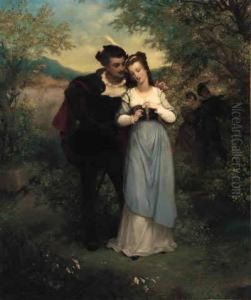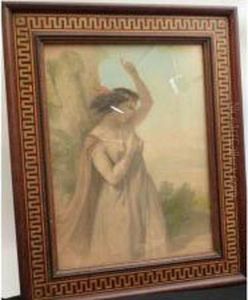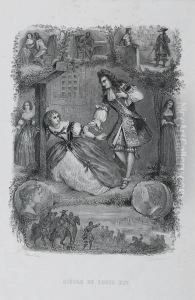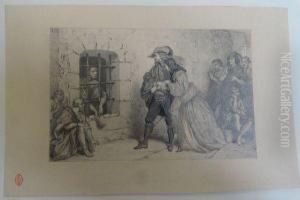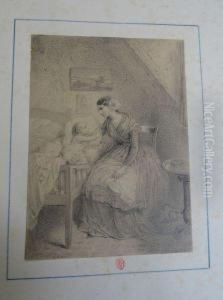Gustave P. Staal Paintings
Gustave Pierre Jean Staal, commonly known as Gustave Staal, was a French engraver and illustrator, born in Paris in 1817 and passed away in 1882. Staal was part of the vibrant 19th-century French art scene, a period marked by a rich interplay between literature and visual arts, with illustrators playing a crucial role in the dissemination of literary works through visual interpretation. His career flourished in an era when the demand for illustrated books was at its peak, thanks to advancements in printing technology and a growing middle-class audience eager for accessible art and literature.
Staal's technical skill and artistic sensitivity positioned him as a sought-after illustrator for many of the period's leading publishers. He contributed to the illustration of various literary works, including classics of French literature and translations of foreign tales, thereby helping to visually define how many canonical texts were imagined by contemporary and future readers. His illustrations often captured the essence of the narrative with a delicate and detailed linearity, characteristic of the Romantic sensibility that pervaded much of the 19th-century French art.
Beyond book illustrations, Gustave Staal's oeuvre also included prints and engravings that were admired for their precision and beauty. Although perhaps less known today compared to some of his contemporaries, Staal's work remains an important part of the 19th-century artistic legacy, offering insight into the period's aesthetic preferences and cultural tendencies. His contributions to the art of illustration not only embellished the texts they accompanied but also played a significant role in the visual culture of his time, bridging the worlds of fine art and popular consumption.
